How To Heat A Dog House Without Electricity? 10 Effective Solutions
Pet Cosset may receive some form of compensation from the links on this page, at no extra charge to you. Learn more.
With the winter season just around the corner, you have to ensure that your dog will not get cold. For outdoor dogs, heating the dog house is a common challenge. A friend once asked me if I know how to heat a dog house without electricity. I was intrigued, so I performed my own little experiment. After a few weird results and almost sending the dog house on fire, I’ve come up with solutions that don’t require access to electrical power.
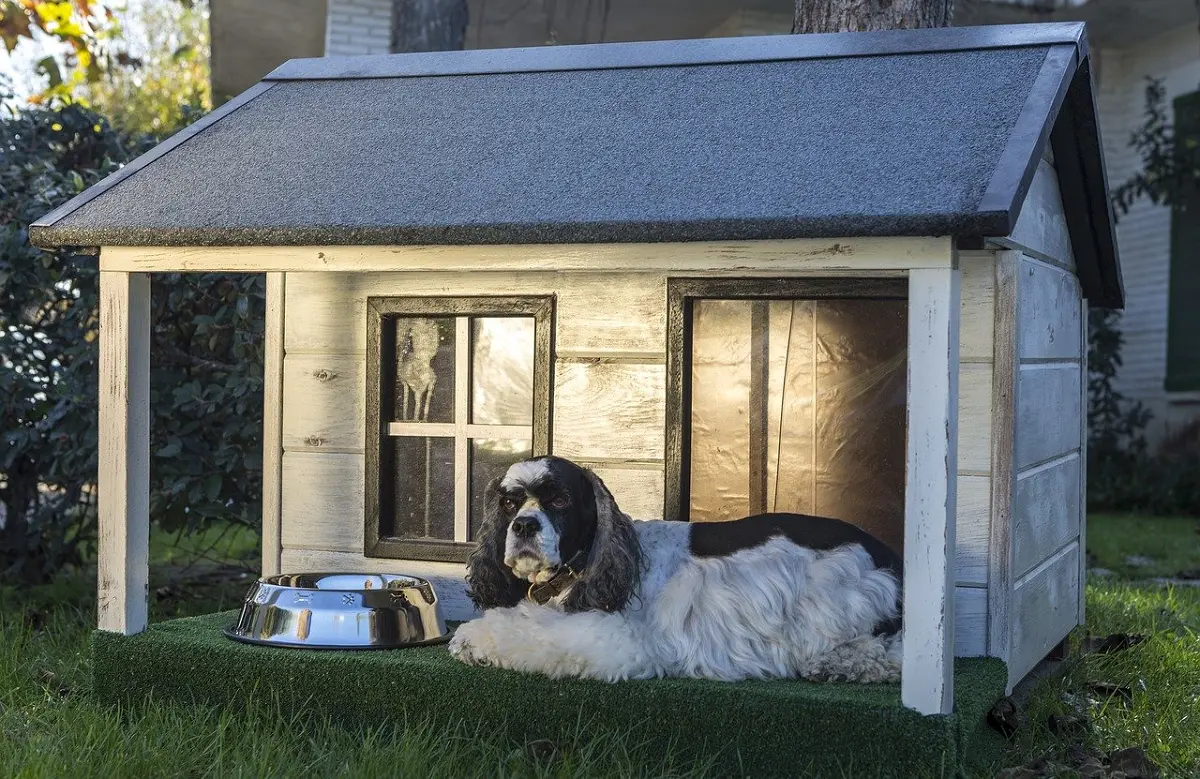
How To Heat A Dog House Without Electricity?
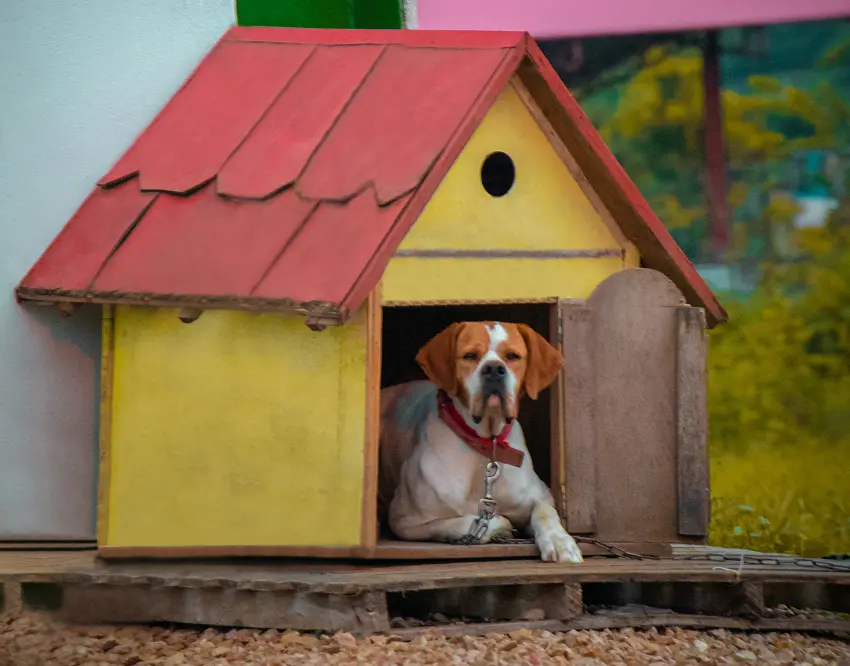
If you want to know how to heat a dog house without electricity, you should follow one or more of the below-mentioned methods.
1. Insulate the dog house
The first layer of defense against the cold weather is thick insulation. You should wrap the dog house with insulation that will trap the dog’s body heat and prevent the cold air from getting in. You can use hay as the first layer of insulation inside the dog house. This will also prevent moisture from entering the surface. Please read here: How To Keep A Dog Cool Inside The House
If your dog isn’t an aggressive chewer, you can use layers of silver foam insulation. This is the one they use on ceilings to prevent heat from getting inside. It will also work in preventing the cold temperature from seeping through the dog house.
2. Raise the floor
This one is very important because direct contact with the snow will make the insulation less effective. Once the dog house is elevated, fill the bottom with hay. You should tie the hay on the feet of the dog house so it wouldn’t be blown away by strong winds.
By filling the bottom, snow will not build up underneath. This will help keep your outdoor dog toasty all day long.
3. Cover it up
If your area is receiving a lot of snow, I suggest that you move the dog house to a covered spot. Don’t place it under a tree because a snow-wrapped branch may fall on it. If you have a shed, it’s best to secure your dog inside.

Take note that you shouldn’t use tent covers because a heavy snowfall can easily topple it down.
4. Chase the sun
A natural way to heat your dog’s house is to place it where the sun shines. The sun’s natural warmth will help thaw some ice and heat the interior of the dog house.
If you want to be extra, you can actually move the dog house to chase the sun. This involves a lot of work, but it keeps your pooch warm.
5. Use a microwavable cushion
A microwavable cushion will give instant warmth to your dog, but remember that this is just a temporary solution. Make sure that you place the microwaved cushion under a layer of fabric to prevent burning your dog.
If you don’t have this cushion, a bottle with warm water is an excellent alternative. Test the temperature on your skin first to ensure that it’s not too hot for your dog.
6. Paint it a dark color
Dark colors absorb heat while lighter ones allow heat to bounce off. You can use this advantage in your dog’s house. Painting it black, navy blue or forest green will help reduce heat loss. It will also help utilize the sunlight that reaches the dog house.
Just make sure that the paint doesn’t have a strong smell. Otherwise, your dog will not want to stay inside. I suggest doing the paint job weeks before the winter starts to give the paint time to cure.
7. Funnel the heat from your house
This method is actually tricky because you basically use electricity, but not within the dog house. If the dog house is located beside your home, you can put up a contraption that will help funnel the warm air.
While this method will take more work than the other solutions above, it’s more effective and long-term. Besides, you only have to set up pipes – no wires are involved.
Once you have the pipes set, seal the gaps around them to prevent hot air leaks. On the other end of the pipe in your home, place a small exhaust fan that will suck the hot air, and propel it into the dog house.
8. Consider buying a thermal dog house
If your dog’s house is already old and worn out, it’s best to purchase an insulated dog house just in time for winter. Unlike typical dog houses, this one is fully insulated with special foam. The door and windows are also enclosed with flaps.
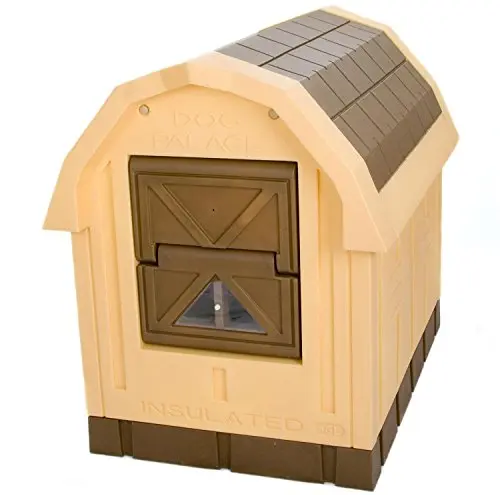
Insulated dog houses are designed for the harshest winter, but it comes at a rather higher price.
9. Add some thermal dog pads
For added warmth, you can also use thermal dog pads. Unlike microwavable cushions, these are self-warming. It traps the heat coming from your dog’s body.
If this specialized pad isn’t available, you can use thermal blankets instead. Layer it up all over your dog’s house. You can also wrap your dog in one if it’s extremely cold.
10. Dress for the part
Lastly, you should never leave your dog naked in the middle of winter. The same way you will layer up during winter, you should also put on some clothes for your dog. An insulated dog jacket will trap its body heat and prevent snow from getting on its skin.
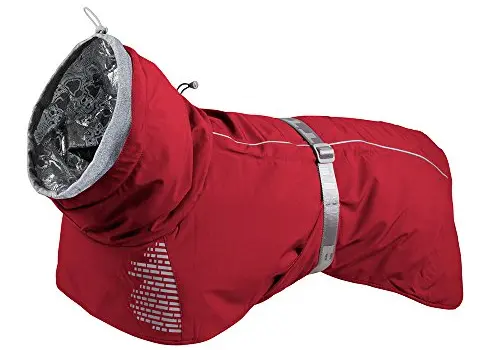
Take note that you should still take the jacket off from time to time to prevent matting on your dog’s coat. You should also wash it regularly.
How cold is too cold for dogs?
Dogs have varying tolerance to cold weather, depending on their breed. For example, the likes of Huskies and Samoyeds are more tolerant of lower temperatures because they were bred as sled dogs. These canines were produced to endure the freezing snow temperature. Please read here: What is the Calmest Dog Breed
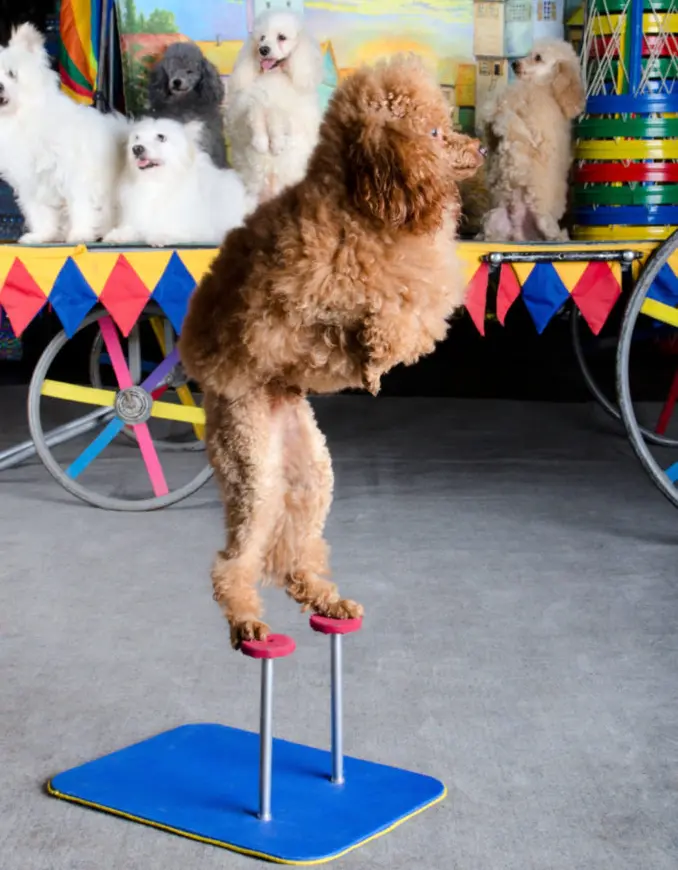
However, dogs like Bulldogs, Chihuahuas, and Boxers can’t tolerate very cold conditions. They have very thin coats that don’t protect them from subzero temperatures.
In general, dogs will be fine at 45F. However, once it goes down, that’s the time some dogs need to be secured indoors or in insulated dog houses.
Don’t wait for your dog to shiver before you heat its dog house. You should prepare for winter ahead to prevent problems and emergency vet visits.
How to tell if your dog is too cold?
Dogs can’t speak, so you should watch out for signs that your dog is too cold. The following are symptoms that a dog is getting too cold. You must warm it immediately to prevent hypothermia in canines.
- Hunched posture. A dog that’s feeling too cold will be hunched with a tucked tail.
- Shivering. The moment you see your dog shaking, you should look for blankets and warm bottles to help the pooch get toasty.
- Reluctance to work. If your dog doesn’t like to touch the snow, take it as a cue that the pooch finds it too cold.
- Whining. If your dog is whimpering outdoors, it’s a sign that he’s feeling cold. This is the reason why you should prepare dog house before winter.
- Muscle stiffness. If your dog’s muscle is becoming stiff due to the cold weather, you should grab a heating pad because this is the onset of hypothermia.
- Shallow breathing. When it’s cold, the air is thin. The cold weather will also stiffen the lung muscles, making it hard to breathe. This is an alarming symptom that will cause respiratory distress in a dog.
- Confusion. Although hypothermia is the opposite of overheating, they share one similar symptom: confusion. If your dog appears drunk or less alert than usual, it might be on the verge of hypothermia.
Conclusion
Knowing how to heat a dog house without electricity will save your pooch from the brutal cold. You just have to be creative and resourceful so you can keep your dog toasty without messing with wires. It’s essential to prepare ahead so you and your pooch won’t suffer from the winter temperatures.
Arrangements for the temperature regulation should depend on your dog’s breed because different breeds have different temperature comfort zones. Even after taking the above-mentioned measures, you may fail in raising the temperature of your dog’s house. You must keep monitoring your dog for any abnormal behavior, signs and contact your veterinarian immediately if something seems disturbed.
Do you have other ideas to add here? Please share it with us! Thank you for reading!
